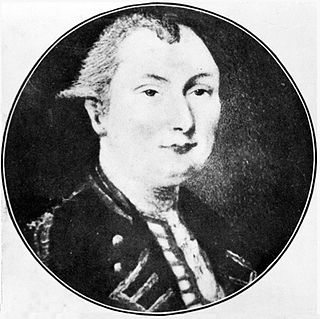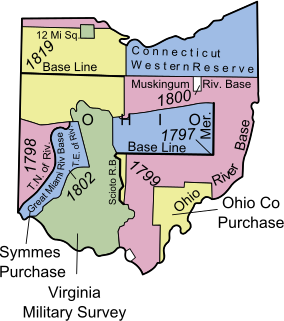Related Research Articles

Sir John Joseph Caldwell Abbott was a Canadian lawyer and politician who served as the third prime minister of Canada from 1891 to 1892. He held office as the leader of the Conservative Party.

Sir Sandford Fleming was a Scottish Canadian engineer and inventor. Born and raised in Scotland, he emigrated to colonial Canada at the age of 18. He promoted worldwide standard time zones, a prime meridian, and use of the 24-hour clock as key elements to communicating the accurate time, all of which influenced the creation of Coordinated Universal Time. He designed Canada's first postage stamp, produced a great deal of work in the fields of land surveying and map making, engineered much of the Intercolonial Railway and the Canadian Pacific Railway, and was a founding member of the Royal Society of Canada and founder of the Canadian Institute.

Samuel Johannes Holland was a Dutch-born Royal Engineer and first Surveyor General of British North America.

Ira Allen was one of the founders of the U.S. state of Vermont and a leader of the Green Mountain Boys during the American colonial period. He was the younger brother of Ethan Allen.

General Jean Victor Allard & Two Bars, ED, CD was the first French Canadian to become Chief of the Defence Staff, the highest position in the Canadian Forces, from 1966 to 1969. He was also the first to hold the accompanying rank of general.

John Milledge was an American politician and slave-owner. He fought in the American Revolution and later served as United States Representative, 26th Governor of Georgia, and United States Senator. Milledge was a founder of Athens, Georgia, and the University of Georgia.
Charles Grimes was an English surveyor who worked in colonial Australia. He served as Surveyor General of New South Wales and discovered the Yarra River in what is now the state of Victoria. During his career, he mapped the route of the Hobart Road, Tasmania's main north-south arterial route. Much of the modern Midland Highway still follows the route that he planned.

Lawrence Cannon, is a Canadian politician from Quebec and Prime Minister Stephen Harper's former Quebec lieutenant. In early 2006, he was made the Minister of Transport. On October 30, 2008, he relinquished oversight of Transport and was sworn in as Minister of Foreign Affairs. He was defeated in the 2011 federal election by the NDP's Mathieu Ravignat. He was appointed as Canadian Ambassador to France in May 2012, and he served in that position until September 2017.

Jean Léon Côté was a prominent French-Canadian politician. He served as a member of the Legislative Assembly of Alberta from 1909 until 1923 sitting with the provincial Liberal Party in both government and opposition. He vacated his provincial seat when he was appointed to the Senate of Canada in 1923. He served until his death in 1924 sitting with the federal Liberal caucus.
William Vondenvelden was a German-born surveyor, printer and political figure in Lower Canada.

Augustus Jones was an American-born Upper Canadian farmer, land speculator, magistrate, militia captain and surveyor. Jones trained as a surveyor in New York City, and fled as a United Empire Loyalist to Upper Canada. In Upper Canada, he worked as a crown surveyor in the Nassau District, where he quickly rose to the position of Deputy Surveyor General, the highest position in a district of Upper Canada. He occupied that position from 1789 informally, and 1791 formally, until his retirement in 1799. During that time he laid down many of the township boundaries in the Niagara Peninsula and on the north shore of Lake Ontario. He led various teams that cut many of the first sideroads and concession roads into these areas, facilitating their settlement by European and American immigrants. Jones also surveyed the routes for Dundas Street and Yonge Street, and supervised their construction. After his retirement, Jones farmed first in Saltfleet Township, later moving to Brantford and finally an estate outside Paris named Cold Springs, where he died in 1836.

Admiral Henry Wolsey Bayfield was a British naval officer and surveyor.

Lt.-Colonel Joseph Bouchette was the Canadian Surveyor-General of British North America. His book, Topographical Description of the Province of Lower Canada was published at London in 1815 and also translated into French. It contained the sum knowledge of the territory at that time. The township of Bouchette, Quebec, was named for him. During the War of 1812 he raised and commanded the Quebec Volunteers. In 1813, he was gazetted Lt. Colonel on the Staff of Governor-General Sir George Prévost.
The provincial government of Quebec is the body responsible for the administration of the Canadian province of Quebec. A constitutional monarchy, the Crown is the corporation sole, assuming distinct roles: the executive, as the Crown-in-Council; the legislature, as the Crown-in-Parliament; and the courts, as the Crown-on-the-Bench. The powers of the Crown are exercised on behalf of three institutions—the Executive Council (Cabinet); the National Assembly; and the judiciary, respectively.

The Twelve Mile Square Reservation, also called the Twelve Mile Square Reserve, was a tract of land in Ohio ceded by Indians to the United States of America in the Treaty of Greenville in 1795. This particular area of land immediately surrounding Fort Miami was considered to be of strategic importance by the United States government representatives. It was subsequently surveyed in a manner different from surrounding land, and lots sold, or granted, to settlers.

Events from the year 1708 in Canada.
James Sprent was a Surveyor General of Tasmania,.
Events from the year 2017 in Canada.

John Collins was an influential Deputy Surveyor General in the Province of Canada shortly after it was captured by the British.
References
- 1 2 "Biography – COLLINS, JOHN (d. 1795) – Volume IV (1771-1800) – Dictionary of Canadian Biography". Biographi.ca. Retrieved 2017-03-31.
- 1 2 "The 'First Business of Govemment' : The Land Granting Administration of Upper Canada" (PDF). Collectionscanada.gc.ca. Retrieved 2017-03-31.
- ↑ "Hon. John Collins, Deputy Surveyor General : Progress Report" (PDF). Aols.org. Retrieved 2017-03-31.